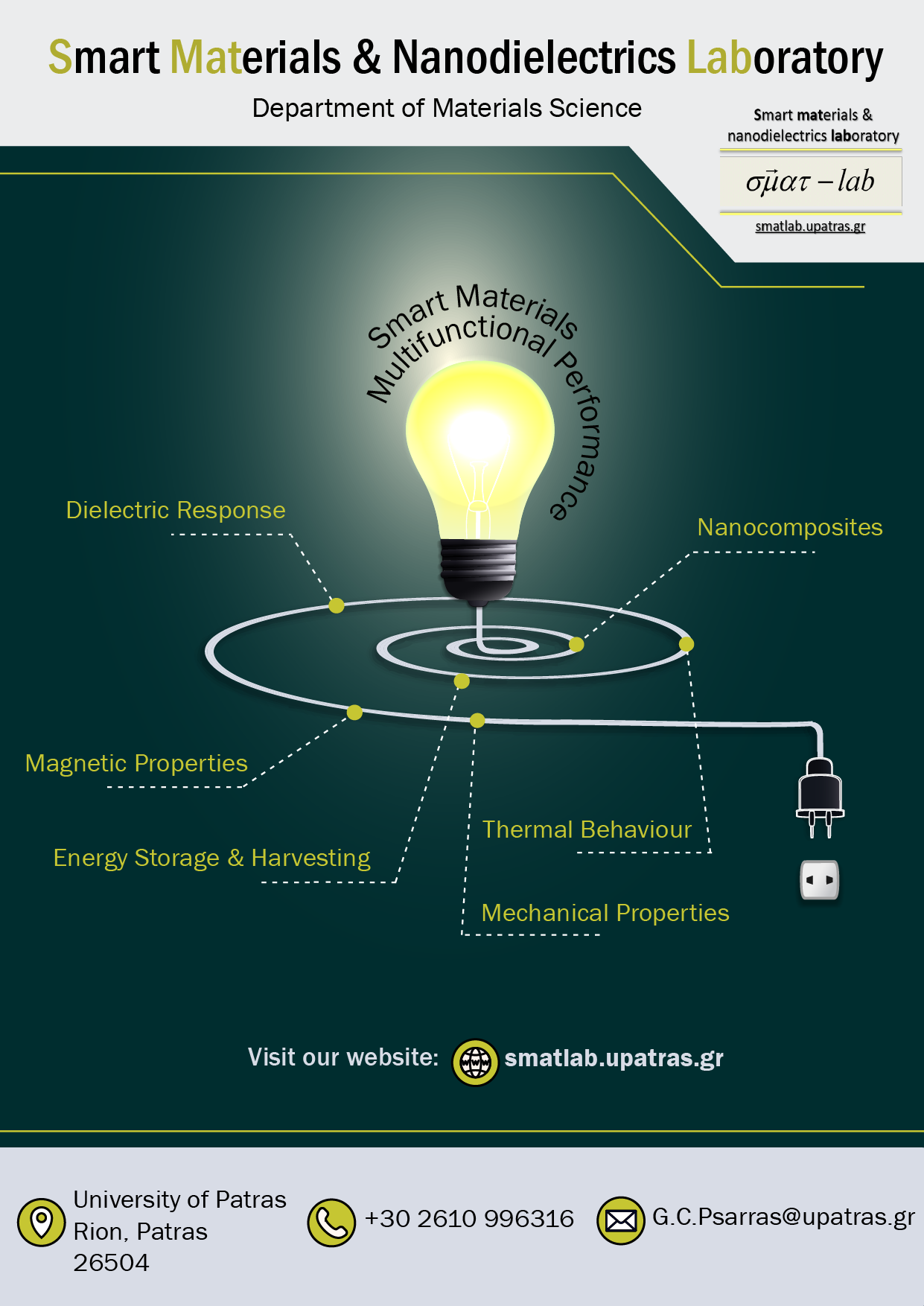Smart Materials and Nanodielectrics belong to currently emerging scientific research fields.
Smart materials are materials’ systems, which are able to tune their behaviour responding to an external stimulus. Certain properties of these systems can be varied in a controllable way, such as stiffness, shape, damping capacity, natural vibration frequency, polarization, conductivity, energy storing efficiency etc. Smart structures incorporate constituents, structural and functional materials, that are able to perform the operations of sensing, actuation and control in a cooperative fashion. Common engineering materials are characterized and classified by the values of their specific properties, while smart materials are primary characterized by their responsive and adaptive functions.
Development of smart materials or, in other words inducing smart behaviour to composite systems follows biomimetic criteria. Smart behaviour is based on the dynamic changes of specific properties or the structural transitions of the functional constituents, responding in real time to the imposed stimulus. Typical examples of smart systems’ components are: piezoelectrics, ferroelectrics, pyroelectrics, electro/magnetostrictive materials, electro/magnetorheological fluids, thrermoresponsive materials, shape memory materials, electrochromic materials, and others.

Smart materials are employed in systems or structures targeting to modify dynamically their service behaviour to meet variable performance needs. Their current applications are focused (but not limited) on structural health monitoring, energy efficiency of devices, vibration and noise control, shape control, self-healing components, and electromechanical coupling devices in the fields of aerospace, automotive, civil engineering and electronic industry.
The term Nanodielectrics refers to dielectric materials, which comprise entities with dimensions (at least one) at the nanometric scale. Two are the basic categories of nanodielectrics:
Polycrystalline semiconducting or insulating materials, with grain diameter at the nanoscale level.
Polymer composites incorporating nanoinclusions.
Nanodielectrics associate dielectric materials with nanotechnology. Since capacitance increases as the width of the inclusions diminishes, nanodielectrics could be considered as the equivalent of a dispersed network of nanocapacitors, where energy can be stored and harvested, introducing thus a new type of nanodevices.
The dielectric behaviour of polymer matrix nanodielectrics can be tailored by simply controlling the type and the amount of the nanofiller. Furthermore, the incorporation of conductive nanoinclusions provides the possibility of adjusting the transition from “insulating to conductive behaviour” by setting the so-called critical concentration or percolation threshold at desirable low levels. Under this point of view, polymer matrix nanocomposites are expected to replace conventional insulating materials in a variety of applications, and at the same time to fulfill the requirements of many, present and future, high tech applications such as electromagnetic radiation shielding, leakage current controllers, self-current regulators, cellular phones, wireless personal digital assistance, stationary power systems, hybrid electric vehicles and others.